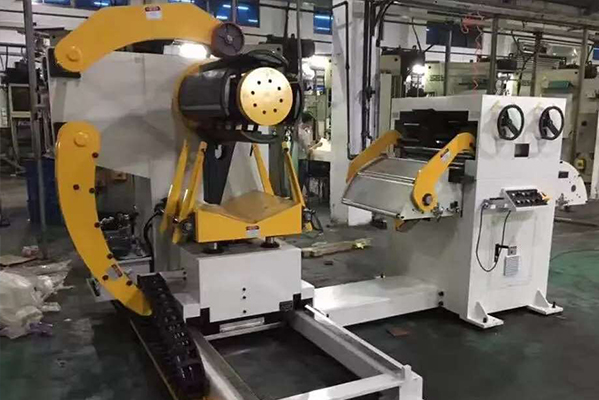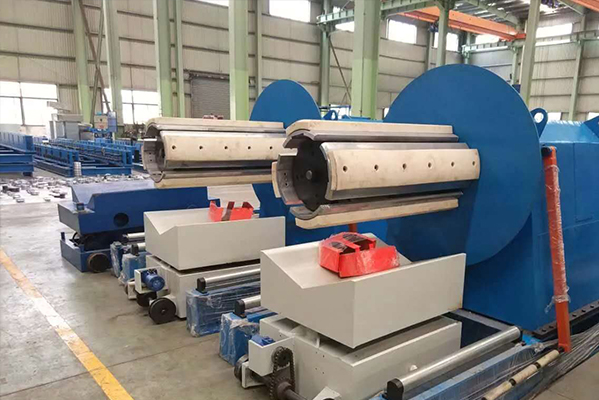Navigation Menu
Contact Us
- Email:
- info@wxavatar.com
- Address:
- Yurong Village, Yuqi Street, Huishan District, Wuxi, China.
Release Date:Mar 21, 2025 Visit:41 Source:Roll Forming Machine Factory
When using a 10-ton hydraulic uncoiler, proper operation and maintenance are critical to ensure safety, efficiency, and longevity of the equipment. Below are key considerations to keep in mind:
1. Pre-Operation Checks
Hydraulic System Inspection:
Verify hydraulic oil levels, and check for leaks in hoses, cylinders, or pumps.
Ensure hydraulic fluid is clean and free of contamination (replace filters regularly).
Mechanical Components:
Inspect the mandrel, expansion jaws, and bearings for wear or damage.
Confirm the coil’s inner diameter matches the mandrel’s adjustable range (e.g., 460–520mm).
Safety Systems:
Test emergency stop buttons, overload sensors, and hydraulic brakes.
Ensure guards and safety interlocks are functional.

2. Load Handling
Weight Limits:
Never exceed the 10-ton capacity to avoid structural stress or machine failure.
Use lifting equipment (e.g., cranes or coil cars) rated for heavy loads to position coils safely.
Coil Alignment:
Center the coil on the mandrel to prevent uneven unwinding or material warping.
Secure the coil with hydraulic expansion jaws to minimize slippage.
3. Operational Best Practices
Speed and Tension Control:
Use the frequency inverter to synchronize the uncoiler’s speed with downstream machinery (e.g., slitters, roll formers).
Adjust hydraulic tension to prevent material stretching or snapping.
Monitor Hydraulic Pressure:
Avoid excessive pressure, which can strain the system or damage the coil.
Material Alignment:
Use guide rollers or edge sensors to keep the strip centered during unwinding.
4. Safety Protocols
Personal Protective Equipment (PPE):
Operators must wear gloves, steel-toe boots, and eye protection.
Lockout/Tagout (LOTO):
Follow LOTO procedures during maintenance or repairs to prevent accidental activation.
Avoid Hydraulic Hazards:
Never inspect or adjust hydraulic components while the system is pressurized.
5. Maintenance and Lubrication
Regular Lubrication:
Grease bearings, guide rollers, and moving parts as per the manufacturer’s schedule.
Hydraulic System Care:
Replace hydraulic oil and filters at recommended intervals (contaminated fluid can damage pumps).
Check for air bubbles in the hydraulic lines, which reduce efficiency.
Component Replacement:
Replace worn-out expansion jaws, seals, or belts promptly to avoid breakdowns.
6. Environmental and Workspace Factors
Floor Stability:
Ensure the floor can support the uncoiler’s weight (10+ tons with load).
Ventilation and Cooling:
Hydraulic systems generate heat; ensure adequate airflow or cooling mechanisms to prevent overheating.
Noise Management:
Use ear protection in high-noise environments or install sound-dampening enclosures.
7. Training and Documentation
Operator Training:
Train staff on PLC controls, emergency procedures, and hydraulic system basics.
Manual Compliance:
Follow the manufacturer’s guidelines for setup, operation, and troubleshooting.
Keep maintenance logs to track inspections and repairs.

8. Troubleshooting Common Issues
Uneven Unwinding:
Check mandrel alignment or adjust guide rollers.
Hydraulic Failures:
Look for leaks, low fluid levels, or pump malfunctions.
Material Jams:
Stop the machine immediately and clear obstructions to avoid damage.
Key Takeaways
1.Safety first: Prioritize PPE, LOTO, and regular system checks.
2.Avoid overloads: Stick to the 10-ton limit and proper alignment.
3.Maintain hydraulics: Clean fluid and leak-free components are critical.
4.Train operators: Skilled personnel reduce downtime and accidents.
For complex issues, consult the manufacturer (e.g., Liming Machinery or Wuxi Wuye Heavy Industry) or refer to technical support from suppliers like those in prior search results.